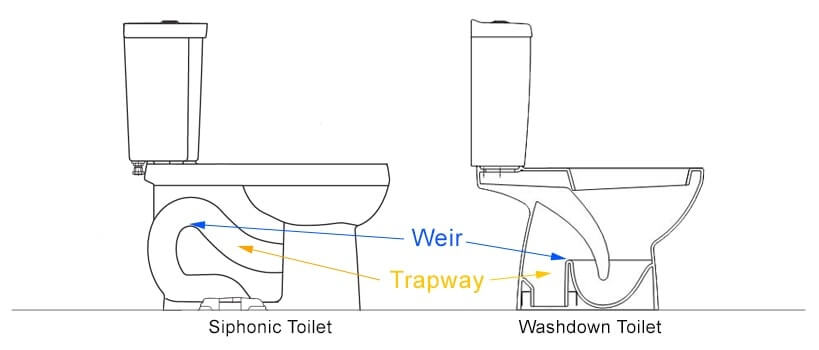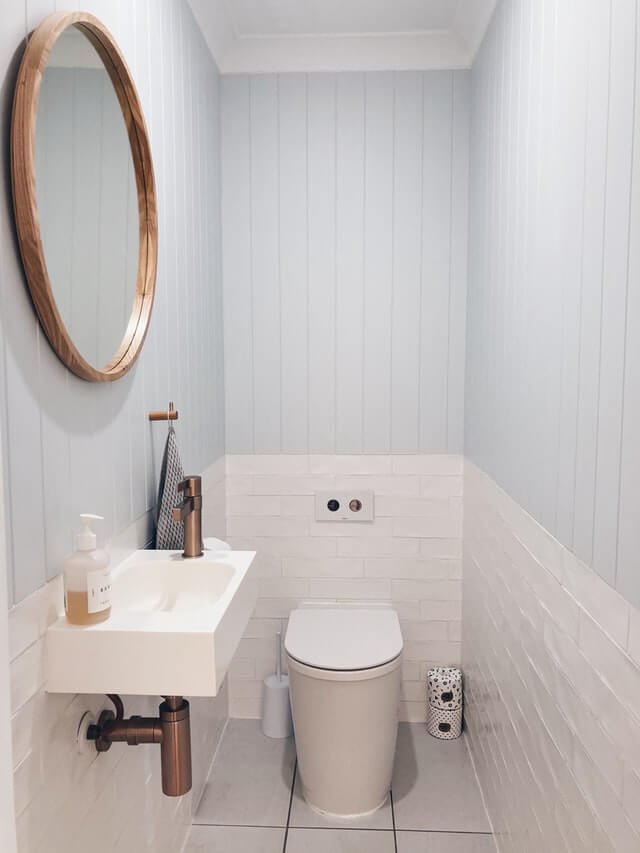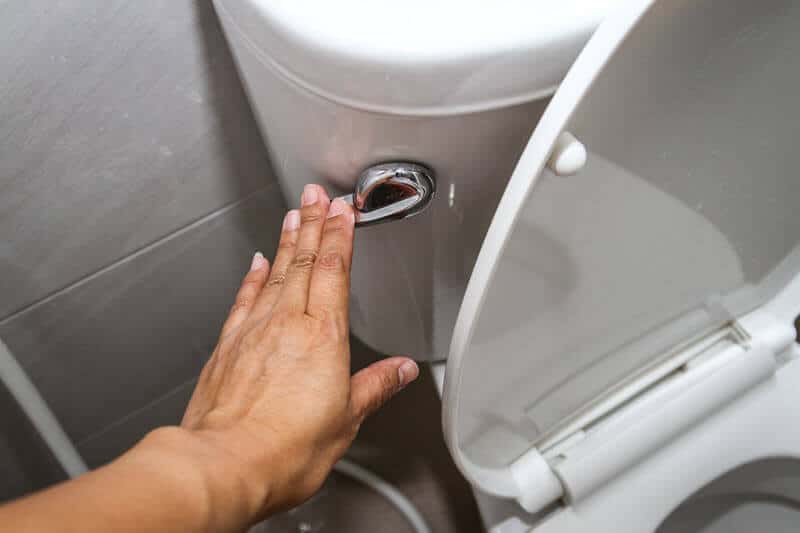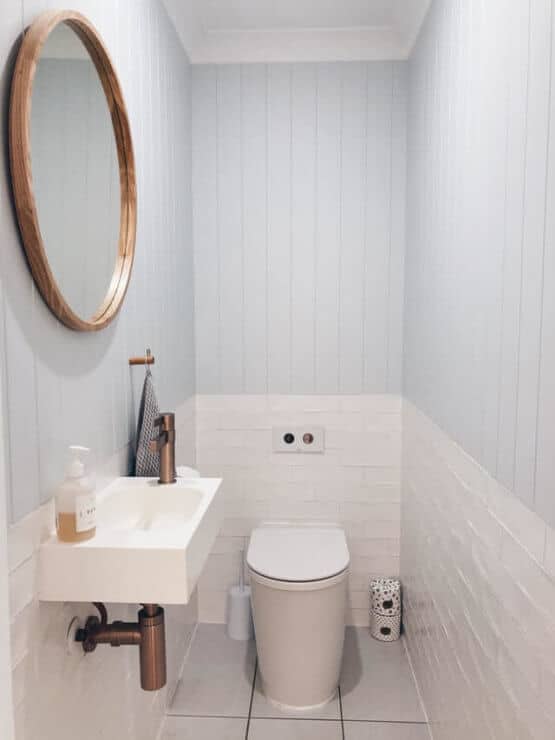Most toilets have siphon jets which are responsible for leaving the toilet bowl empty and clean after flushing. However, when these jets get clogged, your toilet will not flush correctly, leaving you with a stinking mess! Therefore it is essential to know how to clean toilet siphon jet to avoid unpleasant situations. Additionally, knowing how to clean your siphonic toilet properly will keep it well maintained and free of bacteria.
What Is a Siphonic Jet Toilet?

Siphonic jet toilets work exceptionally well! They feature an S-shaped or inverted-P trap way. One end of the siphonic system will connect to your home’s plumbing, while the other will connect to the inlet from the toilet bowl.
The siphon created by this trap design will force the waste matter down the tubes. Siphonic jet toilets usually have a large water surface which means that the water level is generally above the bowl outlet.
In the front of these toilets, a molded pocket, known as the siphon jet which holds extra water. Here you will also find the siphon jet holes which are small openings under the rim of the bowl. The jet is pointed directly towards the trapway; the water gets pulled out of the pocket by vacuum.
When the flush lever is pressed, the water will be sent by the cistern forcefully. The water in the bowl will first rise before it subsides rapidly, pulling the waste with it. Streaks or waste are rarely left behind in siphonic toilets due to the powerful flush. [1]
How To Tell If Your Toilet Siphon Jet Is Clogged?

If your toilet doesn’t flush as effectively, as usual, there is a big chance that your jet is clogged. In most cases, you will be able to tell if there is a jet issue when flushing. The flush will be different, and water will either go straight down the bowl or sputter around.
Once you see this, then it is highly likely you have a clogged jet or jet holes. Another sign that your jets are clogged is when the toilet is taking longer to drain. This means that the jets are not releasing water with the same amount of pressure.
Clogged toilet siphon jets can lead to clogged toilets. Toilet clogs are common, and it is very likely that you, too, will experience this problem at least once. In such a case, no matter how much you flush, the “problem “won’t go away. Too much flushing might even worsen the situation.
One of the main culprits for constant toilet clogs is calcium-mineral buildup across the big hole. This kind of buildup comes from the water itself, which is known as hard water. Therefore, the more you flush, the more these hard water particles will stick together, forming a larger mineral deposit.
In addition to calcium deposit, your toilet siphon jet can get clogged if you don’t maintain your siphonic toilet system properly. These jets can quickly deteriorate when they are left dirty regularly.
How To Inspect The Toilet Siphon Jet?
It is essential to determine the condition of your siphon jet before you clean the system. You will see whether the siphon jets are indeed clogged and what they are clogged with. This will help you figure out which methods to follow for the best cleaning results.
Inspection can be done using a small mirror which will allow you to see the holes around the rim of the toilet.
With a thorough DIY inspection, you will be able to figure out if there are any stains or colored spots present as well.
Dark, orange, or black spots are usually caused by bacteria, while white or rust colored stains are mineral deposits.
How To Clean Toilet Siphon Jet?

To clean toilet siphon jet effectively you will need the following materials:
- Distilled white vinegar
- Toilet brush with stiff nylon bristles
- Baking soda
- Hand Gloves
- A piece of wire
- Bleach or detergent
STEP1: Getting Rid of Bacteria
Bacteria in the toilet can cause stains, a bad smell, and of course, health problems if not taken care of regularly. The toilet is a common breeding place for bacteria and, therefore, not something that can be avoided. However, by cleaning your toilet often with a cleaning solution, you can lessen the number of bacteria in your toilet.
Another thing that keeps bacteria from forming in a toilet is when there is an adequate water flow through them. Therefore it is vital to make sure your toilet flushes properly and to flush after every use.
To kill bacteria in the toilet, a strong detergent is needed. Detergent, bleach, or homemade solutions like vinegar and baking soda can work wonders. Make sure not to choose an abrasive cleaner when it can damage the porcelain of the toilet.
STEP 2:Cleaning the Outside Of The Jets
It is crucial to remove the water from the toilet bowl before the cleaning begins. To do this, you need to turn off the water valve for the toilet and then flush the toilet to remove the excess water from the bowl. [2]
With a small mirror, you can look under the rim of the toilet bowl. This will help you determine what areas under the rim need more attention when cleaning.
You can apply a baking soda and vinegar paste and let it sit for about half an hour. [3]
Make sure to get the paste as far into the jets as possible. After some time has passed, use a scrub to scrape off the bacteria. Inspect again with a mirror and repeat the process if necessary.
STEP 3: Cleaning the Inside of the Jets
The inside of the jets needs a much deeper clean. The first step is also to drain the toilet bowl from water which will expose the dirty jets. With a narrow wire brush inserted into the jets, you need to scrape the surfaces to remove any deposits. Porcelain can scrape and crack easily, and therefore you need to be very careful during this process.
After scraping the jets, apply bleach or detergent around the toilet rim. After the solution has sat for 15 minutes, use a toilet brush to clean the underside of the rim. Check to see if the toilet is clean and repeat if needed before you flush.
STEP 4: Getting Rid Of Mineral Deposits
If you struggle with hard water in your area, then mineral deposits are bound to occur in your toilet. Despite constant cleaning, hard water will cause stains in your toilet bowl. One way to get rid of this problem is to install a water softener, reducing the mineral levels in the water.
To clean out minerals in your toilet jet, you can follow the same procedure as above. However, the cleaning process will be a bit more difficult since the calcium deposit forms a hard layer. Before scraping the jets from a hard water deposit, you can treat the jets with vinegar instead of detergent.
There are two different cleaning methods when using vinegar to get rid of mineral deposits. The one is the spray bottle method, and the other the duct tape method. Depending on how much buildup is in your toilet jet, you can use both methods or one only.
If you struggle to get rid of the deposit, you can increase the intensity of the mixture by adding other components. Borax, citrus juice, or bleach can be added to the mix for a more powerful effect.
ALTERNATIVE: Using the Vinegar Spray Bottle
Once again, turn off the water valve and flush the toilet to get rid of the water in the toilet bowl.
You will have to boil a cup of vinegar for the cleaning solution and transfer it to a spray bottle once it has cooled down. [4] Spray the jets and other areas in the toilet and allow it to sit for an hour.
Eventually, you will see mineral deposits trickling down the bowl, which means the solution is taking effect. With a wire or brush, you can scrape the jets gently. Repeat the process if needed.
Using Duct Tape to Clean Toilet Siphon Jet
The first step is to give the toilet bowl and rims a thorough clean with a toilet brush. Turn off the water and flush it so that you have a dry toilet for cleaning. The next step is to cover the jets with duct tape.
Fill the tank with a gallon of vinegar, and then flush the toilet. The vinegar will be able to soak the jets as the duct tape acts like a seal. After an hour or more, you can remove the tape and inspect the jets to see whether the process needs to be repeated.
With a brush, you can scrape off the remaining debris. If you are satisfied with the results, you can open the waterline and flush the toilet to clear the bowl.
Final Though On Keeping How To Clean Toilet Jet and Keeping It Clean

Cleaning your toilet daily will minimize stains and smells. Proper cleaning of your rim jets should also be performed regularly to avoid clogs. The jet opening can be cleaned periodically with a standard brush and cleaner.
A great way to avoid bacterial buildup is to make sure to wipe your toilet down with bleach regularly.To minimize the effect of hard water is to add a tablespoon of bleach to the overflow tube from time to time.
Avoid abrasive cleaners in the tank because they can harm the rubber parts, including the flapper valve. Warm vinegar in the tank can also help to clear consistent mineral buildup. Letting warm vinegar sit in the tank water for half an hour before flushing will break up any mineral deposits as they form.

Michael Davis is a heating & plumbing expert who currently works as independent contractor in SC. He also writes for Plumbertip.
For almost 10 years he worked on various plumbing tasks across South Carolina.


